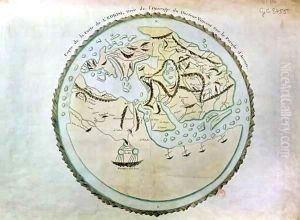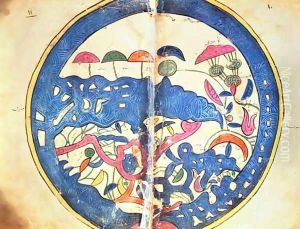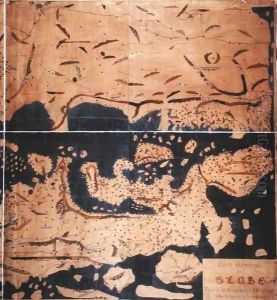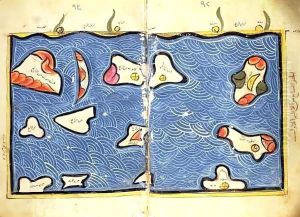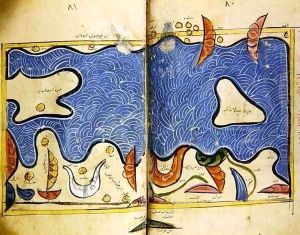Abu Muhammad Al-Idrisi or Edrisi Paintings
Abu Muhammad Al-Idrisi, also known as Al-Idrisi, was a prominent Arab Muslim geographer, cartographer, and Egyptologist who lived during the medieval period. Born in the city of Ceuta, then belonging to the Almoravid Empire, in the year 1100, he was a descendant of the Idrisids, who were the founders of the first major Islamic state in Morocco. Al-Idrisi was well-traveled and spent much of his life in Sicily at the court of King Roger II of Sicily, where he wrote his most celebrated work, the 'Kitab Rujar' or 'The Book of Roger.'
The 'Book of Roger' was a geographic and cartographic encyclopedia of the time and included the famous 'Tabula Rogeriana,' one of the most advanced medieval world maps. Al-Idrisi's work integrated knowledge from the classical world, the Islamic territories, and reports from travelers and explorers, making it a significant historical document for understanding medieval geography. His map depicted the Eurasian continent in its entirety, including both Europe and Asia, with remarkable accuracy for the time.
Al-Idrisi's contributions were not limited to cartography; he also wrote on various topics, including climate, natural sciences, and cultural geography. His understanding of the physical world was comprehensive, and he is known to have divided the world into seven climatic zones, which he described in great detail in his writings. He was a pioneer in emphasizing the importance of empirical data and is often considered ahead of his time in this respect.
Al-Idrisi's work had a profound influence on the knowledge of geography in the medieval Islamic world as well as in Europe. His maps and writings provided a valuable resource for navigators and explorers during the Age of Discovery. He passed away in 1165, but his legacy continued to be felt for centuries as his work remained a reference point for scholars and geographers around the world.
